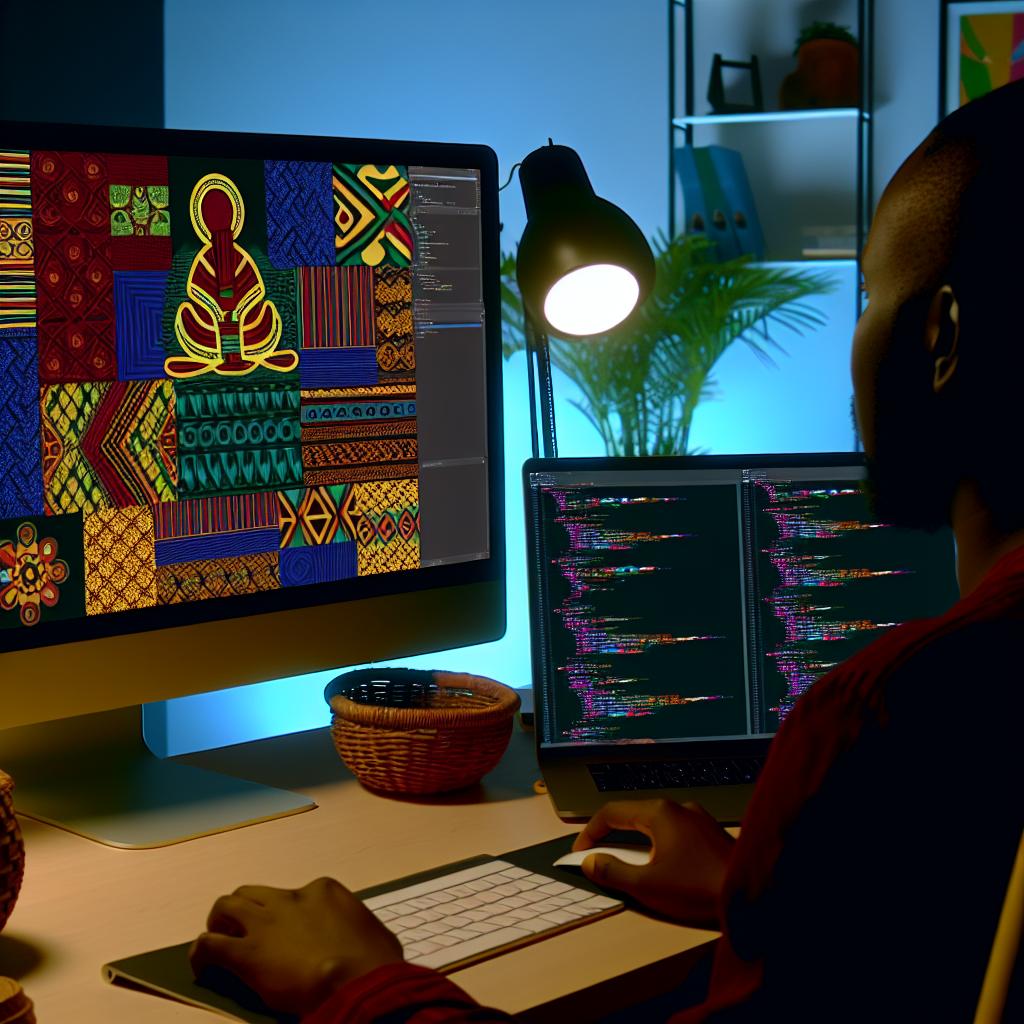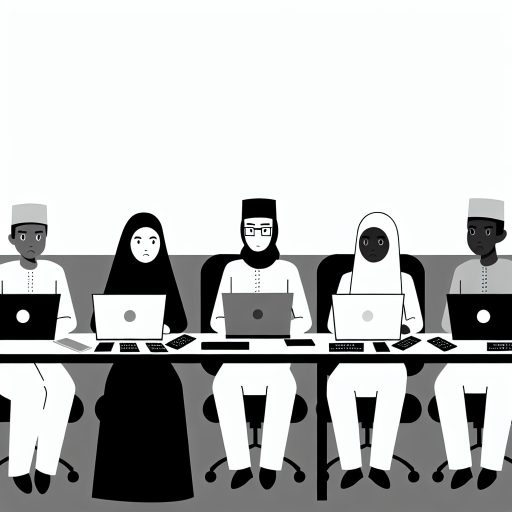Understanding the Importance of Cultural Representation in Web Design
Embracing Identity Through Design
Web design reflects the culture and identity of a society.
Nigerian culture is a rich tapestry of languages, traditions, and art.
A website must capture these elements effectively.
By doing so, designers create connection and authenticity.
Fostering Connection with Your Audience
Cultural representation fosters a sense of belonging.
Visitors often resonate with designs that reflect their experiences.
When users see themselves represented, they engage more deeply.
This connection builds trust and encourages interactions.
Enhancing User Experience
Culturally relevant websites improve user experience significantly.
Visitors appreciate familiar designs and recognizable symbols.
Furthermore, this familiarity helps in navigation and usability.
Culturally aligned content makes users feel at home.
Inspiring Creativity and Innovation
Incorporating cultural elements can inspire innovative designs.
Designers have a unique opportunity to blend tradition and modernity.
Moreover, this approach leads to creative solutions in web aesthetics.
Unlock Your Unique Tech Path
Get expert tech consulting tailored just for you. Receive personalized advice and solutions within 1-3 business days.
Get StartedUltimately, diversity in design nurtures fresh ideas.
Shaping Global Perceptions
Websites represent not just individuals but entire cultures.
As such, well-designed sites can shape global perceptions positively.
They showcase Nigeria’s rich heritage to the world.
Consequently, this representation can influence tourism and business.
Encouraging Cultural Exchange
Culturally inspired websites promote cross-cultural interactions.
This exchange leads to an appreciation of diversity and creativity.
Moreover, it strengthens ties between cultures globally.
Embracing this exchange can enrich the design landscape.
Researching Nigerian Culture: Traditions, Art, and Values
Understanding Traditions
Nigeria is rich in diverse traditions.
Each ethnic group has unique cultural practices.
Family values play a significant role in society.
Traditional ceremonies are vibrant and colorful.
Festivals celebrate important historical events.
Unlock Premium Source Code for Your Projects!
Accelerate your development with our expert-crafted, reusable source code. Perfect for e-commerce, blogs, and portfolios. Study, modify, and build like a pro. Exclusive to Nigeria Coding Academy!
Get CodeMoreover, music and dance express cultural identity.
For example, the Osun-Osogbo festival honors the goddess Osun.
Similarly, the Durbar festival showcases horsemanship and parades.
Exploring Art
Nigerian art reflects its cultural diversity.
Sculptures, paintings, and crafts are widely appreciated.
Wood carvings often depict traditional myths and legends.
Moreover, textiles showcase intricate patterns and colors.
Contemporary artists blend tradition with modern techniques.
For instance, Yinka Shonibare incorporates themes of colonialism.
Additionally, art serves as a medium for social commentary.
Identifying Values
Core values shape Nigerian society significantly.
Respect for elders is paramount in communities.
Furthermore, hospitality is a cherished virtue.
People often greet visitors warmly and offer food.
Furthermore, communal living fosters strong relationships.
These values influence everyday interactions and decisions.
Understanding these aspects enriches cultural appreciation.
Choosing a Color Palette That Resonates with Nigerian Aesthetics
Understanding Nigerian Colors
Nigeria is rich in diverse cultures and traditions.
The colors found in its fabrics and art are vibrant and meaningful.
Each color tells a story and reflects the values of different communities.
Selecting Vibrant Hues
Begin by exploring bold colors that symbolize Nigerian heritage.
Bright yellows, deep greens, and striking reds are commonly used.
For example, yellow can represent wealth and happiness.
Green often symbolizes growth and fertility, while red signifies passion.
Incorporating Traditional Textiles
Consider using traditional textiles like Ankara and Aso Oke in your designs.
These fabrics feature intricate patterns and colors.
They enhance the visual narrative of your website.
Additionally, they connect viewers to Nigerian culture.
Using Color Psychology
Think about the psychological impact of colors.
Green induces feelings of calm and stability.
Red can create excitement and energy, engaging visitors.
Understanding these effects can influence design choices.
Creating Cultural Context
Be mindful of cultural interpretations of colors.
For instance, white often symbolizes purity in many cultures.
However, it can also represent mourning in Nigerian contexts.
Hence, balancing these meanings is crucial for effective communication.
Utilizing Online Tools
Take advantage of online color palette generators.
Tools like Coolors and Adobe Color can help visualize your choices.
These platforms allow for easy experimentation with color combinations.
They enable you to create visually appealing palettes effortlessly.
Testing and Feedback
Before finalizing your color palette, gather feedback from users.
Ask friends, family, or colleagues to share their thoughts.
Subsequent adjustments will improve the overall aesthetic.
Ultimately, user input will ensure the design resonates well.
Explore Further: The Evolution of E-commerce Websites in Nigeria
Incorporating Local Languages and Dialects in Web Content
The Importance of Local Languages
Local languages enrich the cultural identity of a website.
They facilitate deeper connections with the audience.
Moreover, they convey messages in a relatable manner.
Utilizing local languages can enhance user engagement.
This approach ensures a wider reach within communities.
Translating Content Effectively
Accurate translations are crucial for effective communication.
Employing native speakers improves translation quality.
Furthermore, local dialects can vary significantly.
As such, understanding regional nuances is essential.
Use tools like glossaries to maintain consistency.
Creating Culturally Relevant Content
Content should reflect the local culture authentically.
Incorporate local proverbs and idioms where appropriate.
These elements resonate with the target audience.
Stories about local heroes can inspire and connect.
Visuals should also represent local aesthetics and values.
User-Generated Content and Feedback
Encourage users to submit content in their local languages.
This fosters a sense of community and belonging.
Feedback mechanisms help improve language use on the site.
Engagement leads to loyalty and repeat visits.
- Language translation services for website content.
- Community forums for dialect discussions.
- Cultural consultants to guide content creation.
Utilizing these resources can enhance website effectiveness.
Uncover the Details: Why Web Developers Are Critical to Nigeria’s Digital Economy
Utilizing Nigerian Cultural Symbols and Icons in Website Design
Importance of Cultural Representation
Incorporating cultural elements enhances user connection.
Nigerian symbols tell stories and convey rich traditions.
These representations make websites relatable to local audiences.
Moreover, they attract tourists interested in Nigerian culture.
Choosing Appropriate Symbols
Select symbols that resonate with your target audience.
For instance, the Nigerian map signifies national pride.
Escutcheon designs often represent various ethnic groups.
Additionally, traditional patterns can evoke local heritage.
Utilizing Icons and Colors
Icons can simplify messaging and enhance comprehension.
They can also infuse vibrancy into the design.
Use colors that reflect the Nigerian flag, such as green and white.
These colors symbolize unity and peace among Nigerians.
Incorporating Local Languages
Utilize local languages to create more personalized interactions.
This aspect fosters inclusivity and respect for cultural diversity.
It enhances user experience, especially for non-English speakers.
Examples of Brands Using Cultural Elements Successfully
Several Nigerian brands effectively use cultural elements.
Konga’s website showcases traditional motifs and local designs.
Jumia utilizes vibrant colors reflecting Nigerian culture.
These approaches create a unique brand identity online.
Gathering User Feedback and Improving Design
Collect feedback on how users perceive cultural elements.
Conduct usability tests to ensure ease of navigation.
Adapt designs based on user responses for better engagement.
See Related Content: The Role of CMS Platforms in Simplifying Web Development for Nigerians

Showcasing Nigerian Music and Art through Multimedia Elements
Integrating Audio Elements
Audio can powerfully represent Nigerian music on your website.
Start by embedding traditional and contemporary Nigerian songs.
Consider platforms like SoundCloud or Spotify for easy integration.
Moreover, create playlists that highlight various genres and artists.
This approach will engage visitors through familiar sounds.
Utilizing Video Content
Videos offer a dynamic way to present Nigerian culture.
Showcase local musicians performing live concerts or cultural events.
Embed videos from YouTube or similar platforms for accessibility.
In addition, profile artists to tell their stories visually.
This method fosters a deeper connection with the audience.
Featuring Visual Art
Visual art is integral to Nigerian heritage and expression.
Highlight work from contemporary and traditional artists.
Utilize image galleries to create immersive experiences.
Furthermore, include descriptions that explain the cultural significance.
This enriches the visitor’s understanding of each piece.
Incorporating User-Generated Content
Engage your audience by allowing user participation.
Encourage users to share their artwork or music on your platform.
Feature a section for submissions to enhance community connection.
Additionally, host contests to inspire creativity and innovation.
This fosters a collaborative environment on your website.
Creating Interactive Experiences
Interactivity can enhance user engagement significantly.
Design quizzes or polls related to Nigerian culture and music.
Consider incorporating a virtual tour of cultural festivals.
Such experiences can captivate visitors and encourage exploration.
This approach keeps the content fresh and exciting.
Find Out More: How Web Development Is Powering Nigerian Businesses Online
Ensuring Accessibility and Inclusivity for Diverse User Groups
Understanding User Diversity
Every user has unique needs and preferences.
Understanding this diversity helps in creating better websites.
Nigerian culture is rich and varied.
This should reflect in web design.
Identify target demographics and their specific requirements.
Implementing User-Friendly Design
User-friendly design prioritizes accessibility.
Incorporate clear navigation and intuitive layouts.
This approach enables users to find information easily.
Use familiar symbols and icons relevant to Nigerian culture.
Ensure that color choices support users with visual impairments.
Content Accessibility
Content should be easy to read for all audiences.
Employ straightforward language and engaging visuals.
Utilize subtitles and transcripts for multimedia content.
Provide alternatives for users with disabilities.
Engaging with Local Communities
Engage with local communities to understand their needs.
Conduct surveys to gather feedback on website usability.
This helps in tailoring content that resonates culturally.
A collaborative approach fosters inclusivity and acceptance.
Maintaining Relevance through Testing and Updates
Continuous testing ensures the website meets users’ needs.
Incorporate user feedback into regular updates.
This ensures the website remains relevant and effective.
Stay connected with user groups to uphold inclusivity.
Optimizing Website Performance and Mobile Responsiveness for Local Users
Understanding Local User Needs
Nigerian users rely heavily on mobile devices for internet access.
They often navigate websites using slower connections.
Thus, optimizing for speed is crucial.
Different regions exhibit varying internet speeds.
Be aware of these differences when designing your site.
Enhancing Website Load Speed
Compress images to reduce load times effectively.
Utilize caching to improve performance significantly.
Minimize HTTP requests to speed up loading processes.
Consider using a Content Delivery Network (CDN) for better reach.
This can accelerate the delivery of your website globally.
Mobile Responsiveness Essentials
Design your website with a mobile-first approach in mind.
This strategy prioritizes mobile experiences over desktop versions.
Employ responsive web design techniques for flexibility.
Use fluid grids to adapt site layouts gracefully.
Ensure that buttons and links are easily clickable on small screens.
Localizing Content for Nigerian Users
Integrate local languages to connect with your audience.
Cultivate trust by using familiar references and cultural insights.
Showcase local events or customs to engage users further.
Consider incorporating regional imagery that resonates with visitors.
This approach enhances the overall user experience.
Testing and Feedback Strategies
Regularly test your website on various devices and browsers.
Gather feedback from local users to identify improvement areas.
Keep track of performance metrics to monitor success.
Adjust based on user behavior and preferences consistently.
Incorporate changes to stay relevant in the local market.
Additional Resources
Excited to announce the members of the Advisory Committee of the …
Reducing Post-Harvest Losses in Nigeria’s Aquaculture Sector …




